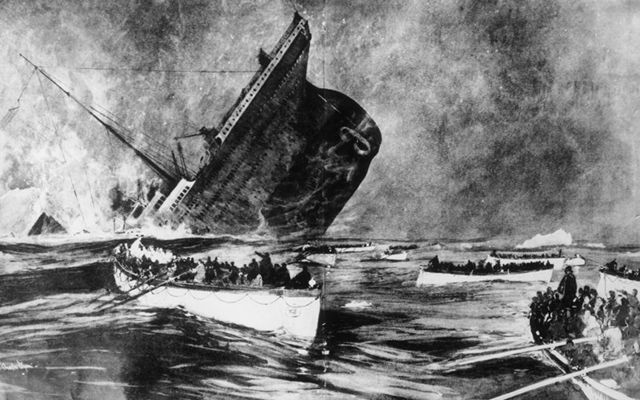The private journal of the judge who oversaw the inquiry into the Titanic disaster which reveals the mistakes that caused the famous is sinking in 1912 has been made public for the first time.
British judge and politician John Charles Bigham was charged with investigating the fatal disaster that claimed roughly 1,500 lives and his private journals were made public in "Titanic's Lost Evidence", a new documentary that aired on Sky History on January 5.
Bigham, who headed the British Board of Trade's inquiry between May 2 and July 3, 1912. outlined a number of reasons why the Titanic sank on April 15, 1912.
He wrote that the ship was traveling too fast and that the ship's crew repeatedly ignored ice warning, while he also noted that watertight doors were left open as the Titanic sank.
Craig Sopin, a collector of Titanic memorabilia from Philadelphia, told the Daily Mail that Bigham's journal showed that two passing vessels had warned the Titanic's crew of "icebergs, growlers and flows", also warning that temperatures were falling.
Bigham's journal indicated that an ice warning reached the Titanic at 2 p.m. on April 14 and was handed to Bruce Ismay of the White Star Line who pocketed it rather than making the warning public.
The iceberg was eventually spotted by the Titanic's crow's nest lookout at 11:39 p.m., but the ship was traveling at 26 mph, which was too fast to avoid the 60-foot iceberg.
The journal also noted that the Titanic continued moving at half-speed for 20 miles after it struck the iceberg which increased the amount of water that flood the boat.
Bigham additionally wrote that the Titanic's lifeboats could only hold half of the ship's passengers and that lifeboat drills had been canceled during the ship's maiden voyage. He commented that the cancelation of lifeboat drills was "unusual".
The ship's lifeboats also weren't filled to capacity, Bigham wrote, while one lifeboat contained 61 male passengers out of 68 people on board, despite an order to fill lifeboats with women and children first.
Bigham also commented on the fact that just two lifeboats turned around to pull passengers from the freezing water, according to Sky History's new documentary, which is part of their "History's Greatest Mysteries" series.
The British Board of Trade's inquiry was the most detailed public inquiry ever at the time and involved testimonies from crew members, passengers, and experts in addition to testimonies from Captain Arthur Rostron of the Carpathia - the ship that rescued around 700 survivors.




Comments